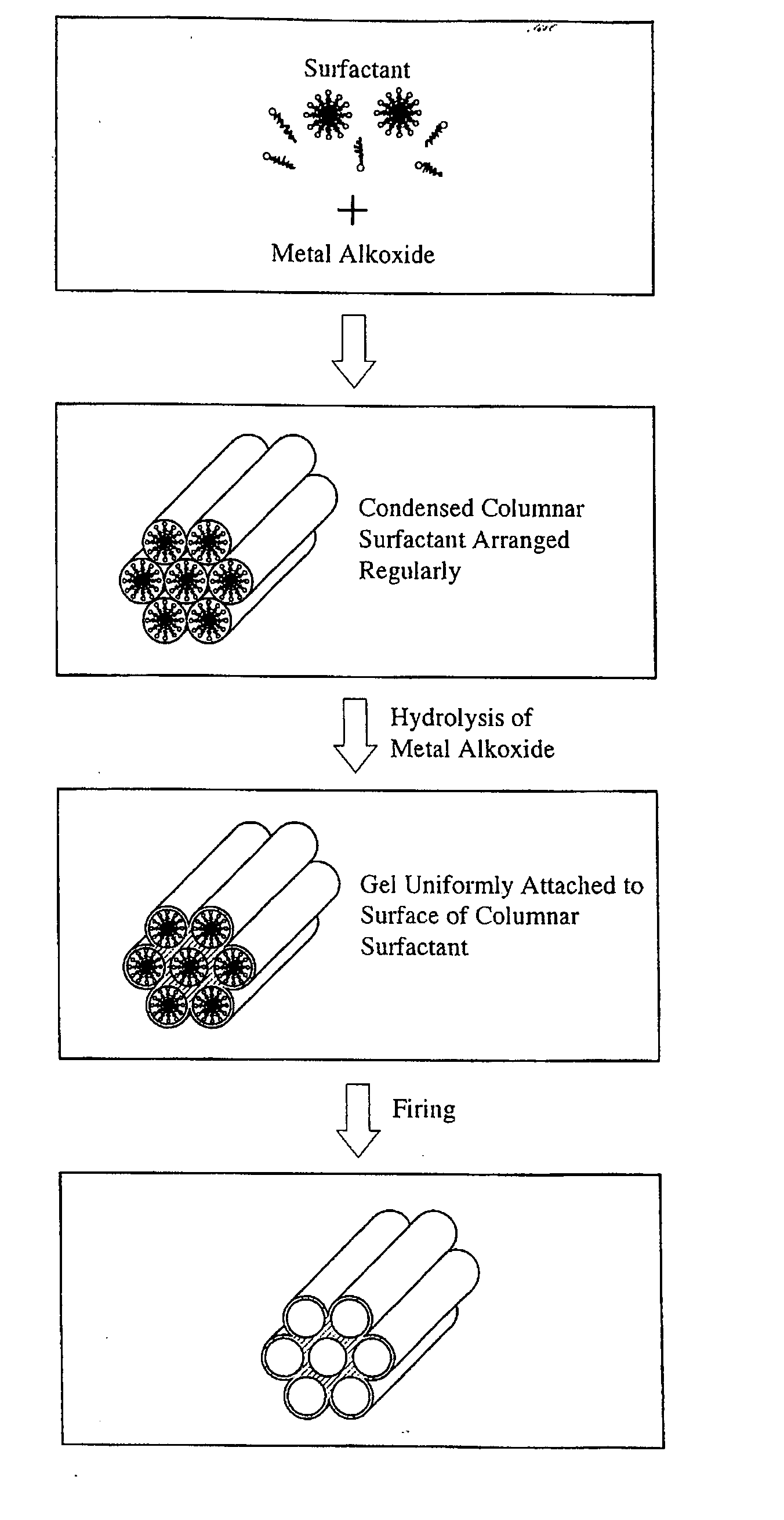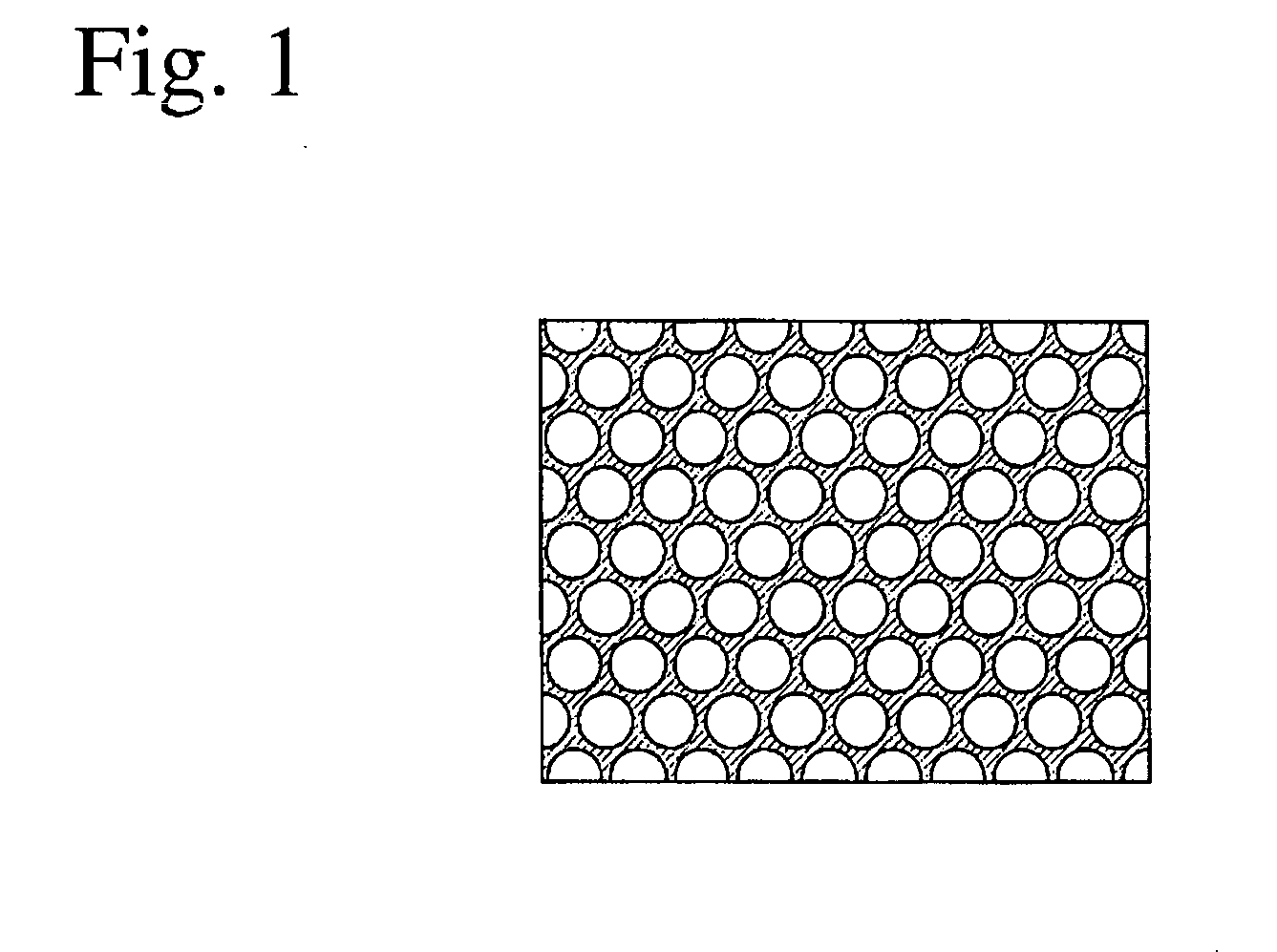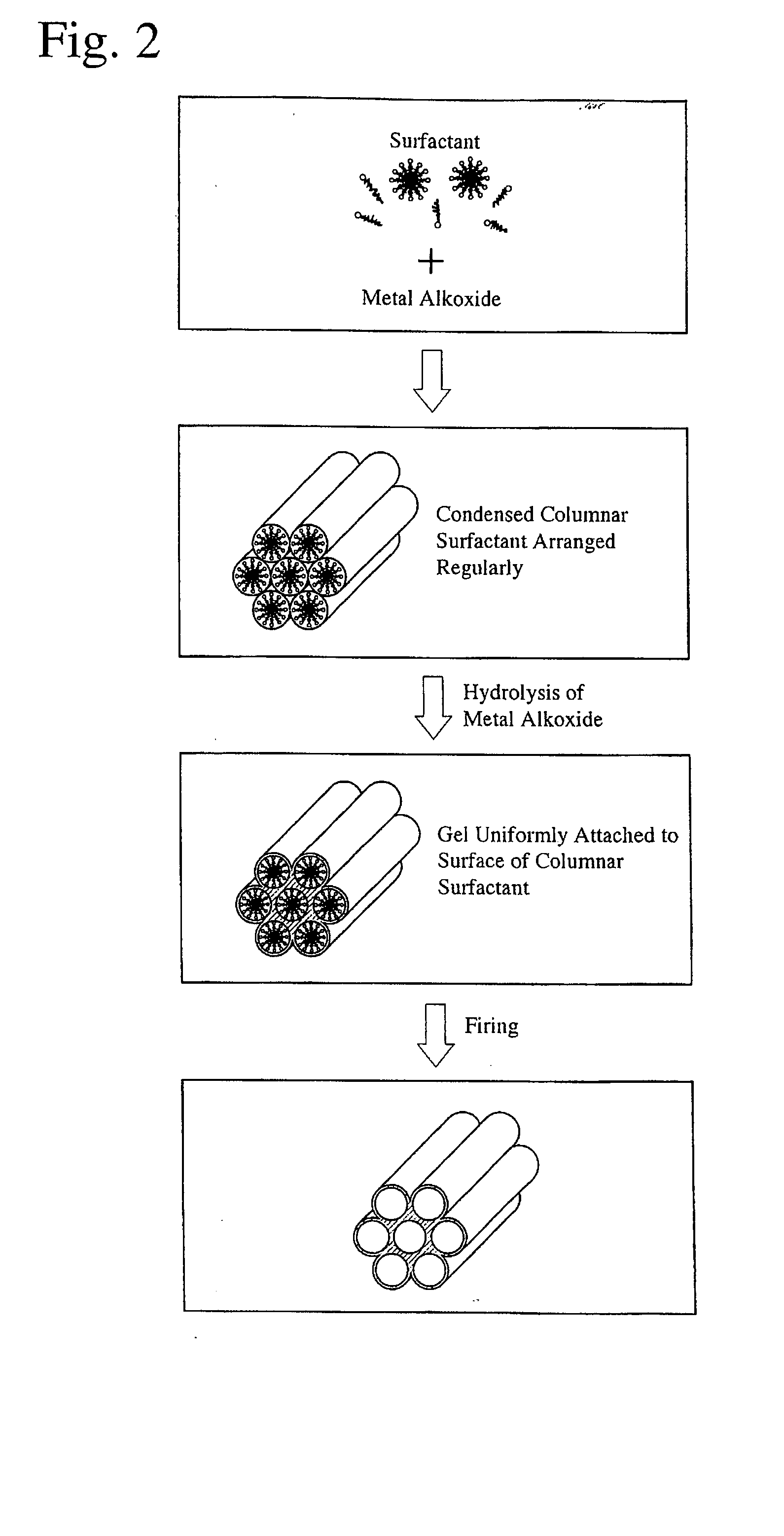Three dimensional high regular nano-porous inorganic material having fine pores and method for preparation thereof, and method for evaluation thereof
a nanoporous inorganic material, three-dimensional technology, applied in the field of nanoporous inorganic materials, can solve the problems of high production cost of porous materials, uneven pore size distribution, and poor uniformity of porous materials
- Summary
- Abstract
- Description
- Claims
- Application Information
AI Technical Summary
Benefits of technology
Problems solved by technology
Method used
Image
Examples
example 1
(1) Preparation of Porous Silica
[0079] 0.01 mol of tetraethoxysilicate (TEOS, “T0100” available from Tokyo Kasei Kogyo Co., Ltd., purity: 96% or more) was used as a silicon alkoxide, and alkyltrimethylammonium chloride (CnTAC, wherein n is an integer of 10 to 18 representing the number of carbon atoms in a long-chain alkyl group, “H0082”, purity: 98% or more) was used as a cationic surfactant. The number of carbon atoms in the long-chain alkyl group in the alkyltrimethylammonium chloride is shown in Table 1. 0.01 mol of TEOS and various amounts of CnTAC were dissolved in 0.10 mol of ethanol (special-grade chemical available from Wako Pure Chemical Industries, Ltd., purity: 99.5% or more by volume), and stirred by a magnetic stirrer to obtain a uniform solution.
[0080] 1.80 g of an aqueous hydrochloric acid solution (10−3M) was added to each solution, and the resultant mixed solution was stirred at room temperature for 5 hours to hydrolyze TEOS. The pH of the hydrolysis solution mea...
PUM
| Property | Measurement | Unit |
|---|---|---|
| Temperature | aaaaa | aaaaa |
| Temperature | aaaaa | aaaaa |
| Temperature | aaaaa | aaaaa |
Abstract
Description
Claims
Application Information
 Login to View More
Login to View More - R&D
- Intellectual Property
- Life Sciences
- Materials
- Tech Scout
- Unparalleled Data Quality
- Higher Quality Content
- 60% Fewer Hallucinations
Browse by: Latest US Patents, China's latest patents, Technical Efficacy Thesaurus, Application Domain, Technology Topic, Popular Technical Reports.
© 2025 PatSnap. All rights reserved.Legal|Privacy policy|Modern Slavery Act Transparency Statement|Sitemap|About US| Contact US: help@patsnap.com



